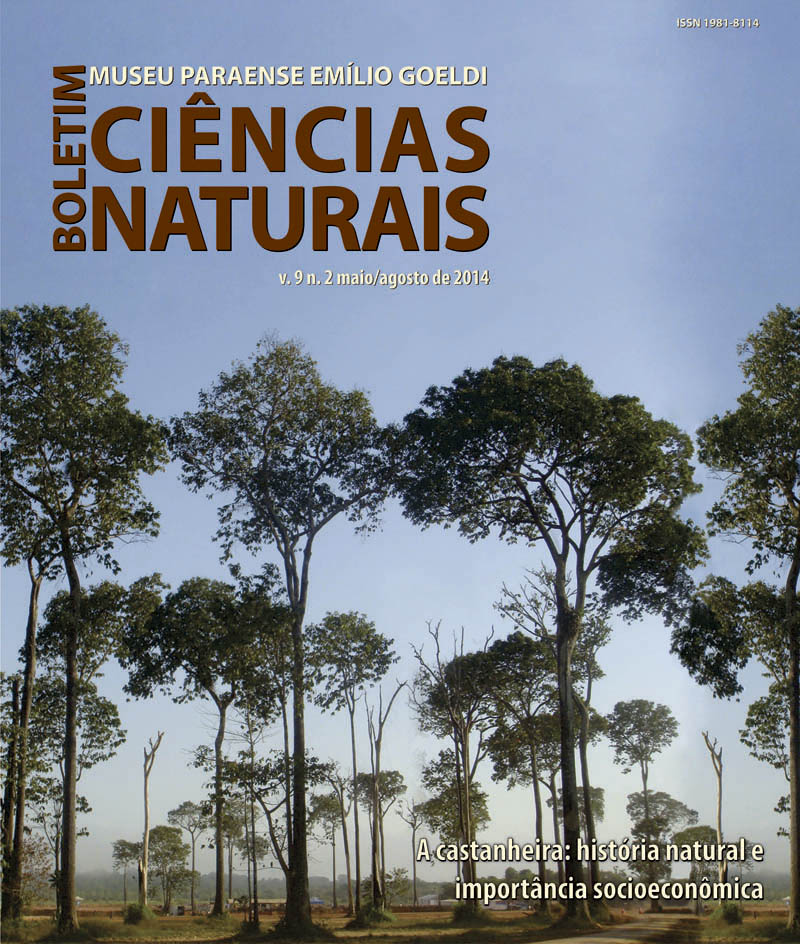Phenology, structure and seed production of indigenous populations of the Brazil nut tree in Roraima and socio-economic characteristics of extractive communities
DOI:
https://doi.org/10.46357/bcnaturais.v9i2.533Keywords:
Amazon, Non-timber forest products, Bertholletia excelsa, Phenology, Seed yieldAbstract
This paper assesses the phenology, population structure and the fruit and seed production of native Brazil nut trees in the state of Roraima, and characterizes the extractive communities and extraction system practiced in this region of Amazonia. Characterization of the extractive communities and extraction system was done through questionnaires and panel discussions conducted between 2005 and 2010. Analyses of population structure, phenology and fruit and seed production were conducted at sites located in the municipalities of Caracaraí and São João da Baliza, installed between the years 2005-2008. We found that the extraction of Brazil nut makes up a significant part of the income of riverine and indigenous communities but is performed with low levels of social organization, little government support and without any control over the processes that can lead to contamination by aflatoxins. The density and productivity of Brazil nut trees are within the range expected for the Amazon region. We found that Brazil nut tree flowering occurs in the dry season, and lasts five to six months. Dispersal of fruits occurs during four to six months in the rainy season, and peaks between April to June.
Downloads
Published
Issue
Section
License
Publication means fully assigning and transferring all copyrights of the manuscript to the journal. The Liability Statement and
Assignment of Copyrights will be enclosed with the notice of acceptance. All the authors must sign the document and return it to the journal.








